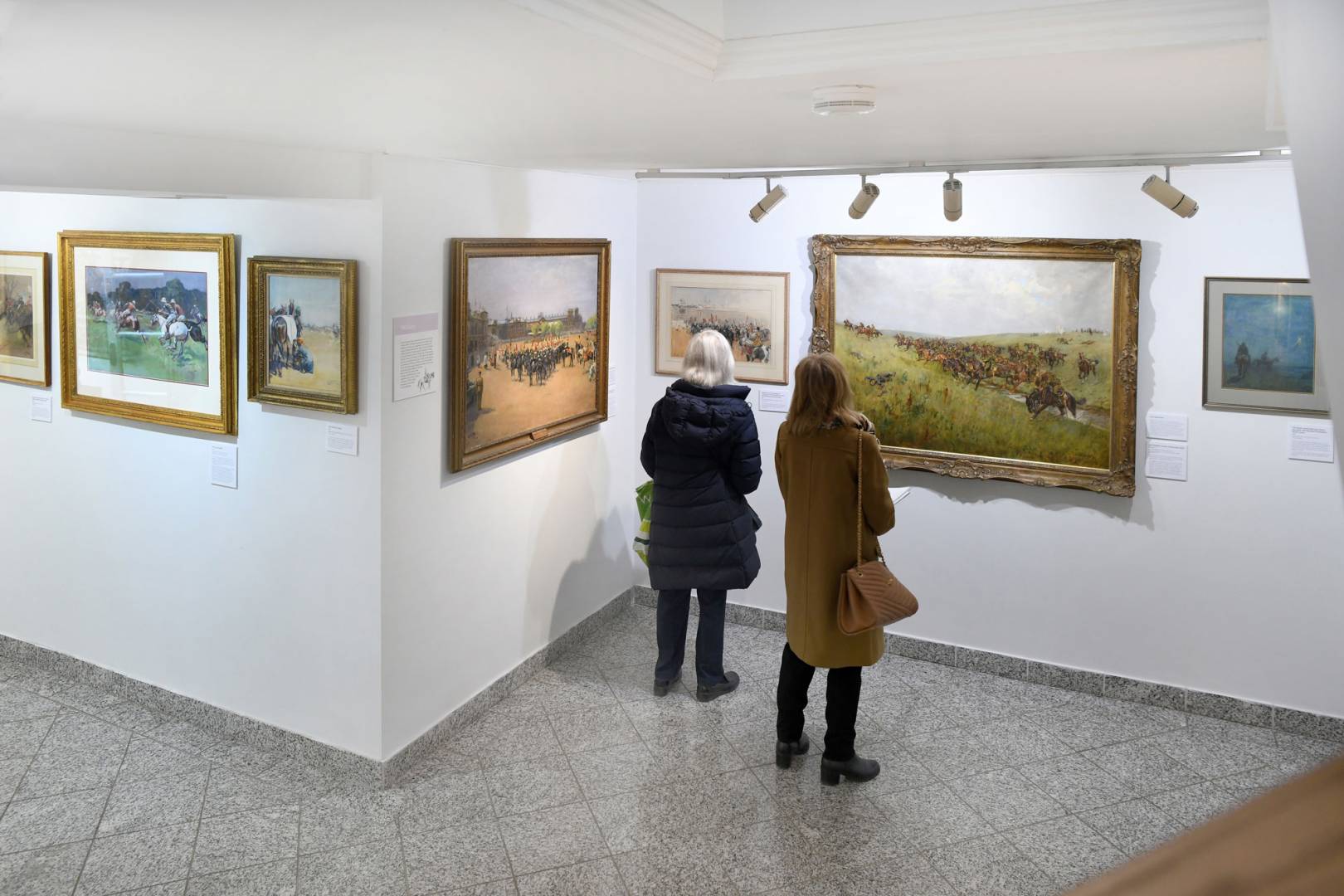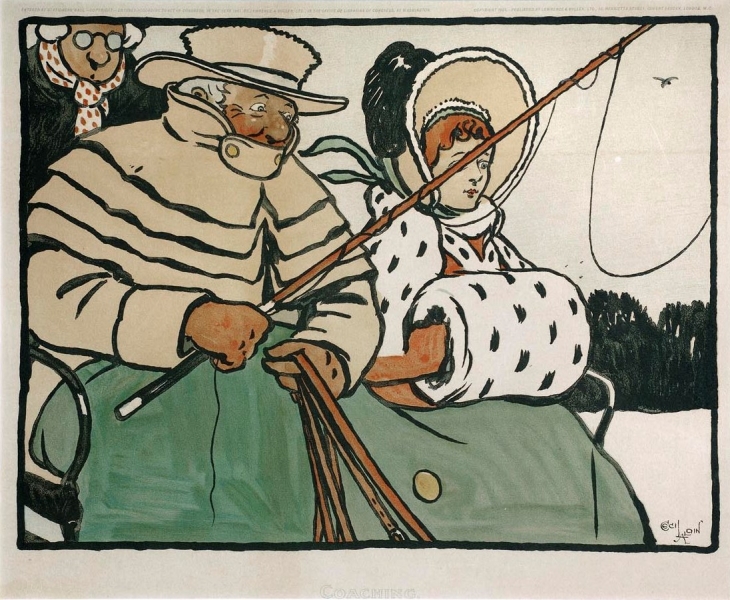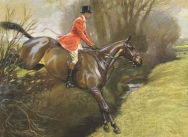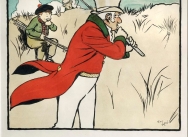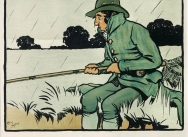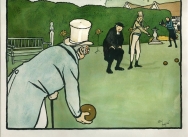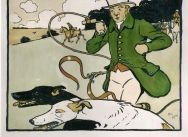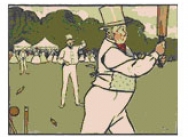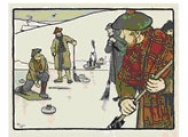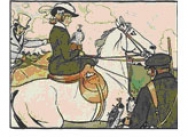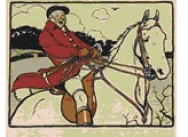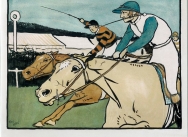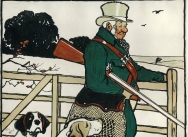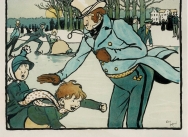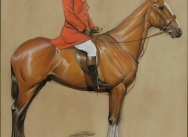Cecil Aldin was born in Slough, the son of a successful builder and amateur artist, Charles Aldin. The family moved to Kensington when Cecil was still a baby. On leaving school, where he had shown considerable talent, he was briefly a pupil of the artist Albert Moore before studying at the National Art Training School, South Kensington.
The turning point to his subsequent artistic career came while attending Frank Calderon’s summer school at Midhurst, Sussex. By the early 1890s his sketches were appearing in the Illustrated London News, The Pall Mall Gazette and other periodicals. A commission to illustrate the first serialisation of Rudyard Kipling’s Jungle Stories in the Pall Mall Budget in 1894 confirmed his reputation as a leading illustrator of the day.
Aldin married the following year and went to live at Bedford Park, Chiswick where his own menagerie of subjects included a pony, donkey, monkey and thirteen dogs. A cavalcade of often humorous illustrations of hunting, coaching, racing and particularly dogs poured from his hand, the majority painted in pastel or watercolour; in later years he mastered etching. He moved with his family to Henley-on-Thames in 1904.
Hunting as much as possible, he was for various periods Master of The Peppard Farmers’ Harriers and Honorary Secretary of the South Berks Foxhounds. During the First World War he was in charge of a Remount Depot (where Alfred Munnings (q.v.) was an assistant), later forming a pack of beagles for the Royal Flying Corps (which was the start of the hounds at RAF Cranwell); he also hunted with otterhounds and bassets. Aldin rode in point-to-points and organised children’s pony shows, the latter on Exmoor where he spent each summer.
Arthritis attacked his hands making it increasingly difficult to draw and paint. Hoping for some relief in a warmer climate, he moved with his family and five dogs to Majorca in 1934. He completed his autobiography, Time I Was Dead, in the same year. Returning to London for an operation, Cecil Aldin died of a heart attack at the London Clinic on 6 January 1935. In the obituary notice in The Times it was written that "Cecil Aldin can be described as one of the leading spirits in the renaissance of British sporting art."
The British Sporting Art Trust held a loan exhibition of Cecil Aldin’s work at the Leicestershire Museum and Art Gallery; the Alpine Gallery, London; Sotheby’s, West Sussex; and in Paris in 1990/91.


